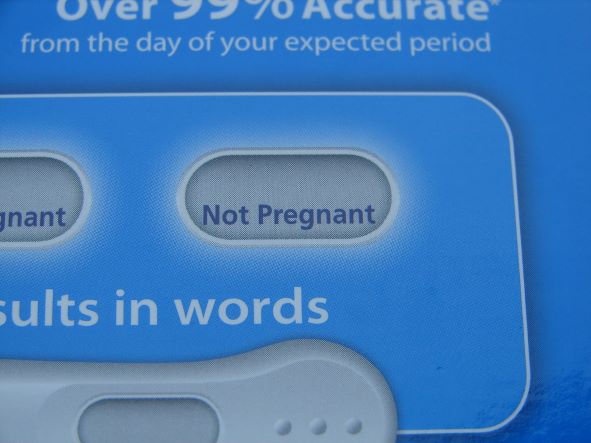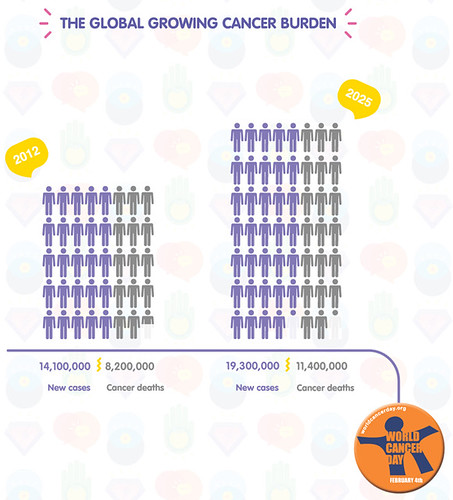What is Insulin and Insulin Resistance?

Insulin is a hormone produced mostly by the pancreas. Its job is to put away the groceries you consume. It controls fuel use in the body, helping cells such as muscle cells absorb and use it, or fat cells absorb and store it. Insulin is like a doorman with a key to each cell unlocking the doors of cells to allow glucose or fructose inside. Carbohydrates break down into the sugar, glucose, that this doorman directs though out the body. Fructose is the sugar that comes from fruit which insulin guides through the blood stream into the cells.
Our doorman, insulin, begins to have problems when the cells have received too much glucose and no longer want anymore. It’s as if many of the locks become warped and insulin’s key has a hard time working in them anymore. This is a picture of what it means to have Insulin Resistance (IR). IR is always accompanied by Hyperinsulinemia which is too much insulin in the blood.
As a result of the elevated levels of glucose that can’t get into the cells, the pancreas produces even more insulin to help out in this vital job. With time it takes more and more insulin to get the same amount of glucose into the cells. Thus, insulin resistance increases. The overabundance of this hormone travels throughout the body causing and exacerbating many problems that it otherwise wouldn’t if in the proper balance and able to do its job.

What is Metabolic Syndrome and What Does It Have to Do with Insulin Resistance?
Your body’s metabolism basically consists of how it uses what you consume to keep you alive. Metabolic syndrome is defined as the condition you have if three of the following symptoms are present in your body – excess belly fat, high fasting blood sugar, high blood pressure, high triglycerides (LDLs or low density lipoproteins), or low HDL (high density lipoprotein) cholesterol. All of these are linked to insulin resistance and also heart disease and other chronic conditions that lead to death. Let me give you a quick explanation of the connection in each.
Excess Belly Fat

Insulin is a storage and growth hormone. It will first direct glucose to the muscles to be used for energy, but if the muscles don’t need it, fat cells will be used and created to store the excess fuel. Since you have excess energy in the form of glucose, your body sees no need to burn fat. Though obesity is a major indicator of Metabolic Syndrome and Insulin Resistance, it is important to remember you may very well have these conditions and be thin. So be sure to check for the other signs as well.
High Fasting Blood Sugar

As you may guess, if your cells are resisting insulin’s attempts to get glucose inside and you continue to consume things that break down into glucose, then excess glucose will be left in your blood stream longer than it should. Chronic high blood sugar is considered Prediabetes or Type 2 Diabetes. When your pancreas basically breaks and can no longer produce insulin, you then have Type 1 Diabetes. Type 1 Diabetes is usually found as a genetic condition someone is born with, but it can also be caused by too much abuse of the pancreas in this manner.
An estimated 50% to 80% of the population is thought to have insulin resistance, prediabetes, or diabetes and that percentage is increasing. High blood sugar forces your kidneys to make more urine in order to pass sugar from your blood As a result, extreme thirst and frequent urination results.
High Triglycerides (LDLs)

With insulin resistance, cells can’t absorb nutrition, protein, and fat as well, so extra is dumped in the blood. High triglycerides are extra fats that are in the blood. Some of them undergo a change and begin getting through the artery walls and causing clogging.
High Blood Pressure

The endothelial cells of the blood vessels, (basically the skin of the vessels), are thickened by excess insulin so these blood vessels get constricted and don’t dilate, (expand), when needed, thus causing hypertension, (high blood pressure.) Another related cause of rising blood pressure is that too much insulin causes the body to hold on to the hormone aldosterone which encourages the kidney to hold onto water and sodium and eliminate potassium. Thus, water is reabsorbed, the blood vessels become too full and blood pressure goes up. Fluid retention, seen in swollen ankles, also becomes evident.
Low HDL Cholesterol

Low HDL cholesterol is associated with heart disease. It circulates in the blood stream and picks up extra cholesterol and transports it back to the liver to be processed and flushed from the body. Saturated fats and intermittent fasting actually increase HDL while smoking lowers it. Low HDL cholesterol is linked to insulin resistance.
What is Normal and Healthy?
Before we cover more of the negative effects of insulin resistance, let me give you a picture of how a normal, healthy body should behave. The purpose of eating is to provide fuel for your body to have energy and healthy cells. You only need about 1 teaspoon of sugar in the body’s bloodstream at any one time. The rest must be used or stored right away in order to prevent toxic levels from remaining in the bloodstream. A soda or juice is around 12 teaspoons. As a result, these drinks and other foods and drinks that contain significant carbohydrates require a big insulin response to quickly move sugar out of the bloodstream. A good fasting glucose is about 75-95 milligrams per deciliter, while the glucose level during digestion should be between about 90-120mg/dL. Protein has a small insulin response but is mostly turned directly into needed tissues. Fat has no insulin response because it doesn’t get turned into storage or tissues for future use. It is already the fuel source needed.
More Effects of Too Much Insulin in the Bloodstream
Hunger Cravings and Fatigue
Besides the effects of insulin resistance associated with metabolic syndrome, there are many more. I will touch on some of them in this blog. One insidious effect of excess insulin in the bloodstream is hunger cravings and fatigue. Insulin resistance makes you hungry because insulin helps your cells absorb nutrition. When the cells no longer properly absorb the nutrition, then your body isn’t satisfied and you continue to crave carbs. This, of course, causes a vicious cycle. The spike of insulin from eating carbs provokes cravings for more carbs which will cause even more insulin to be produced. In between the spikes of sugar to the cells, energy levels drop and greater fatigue sets in, thus the highs and lows of energy with insulin resistance. This is especially evident when someone eats mostly carbs and very little real nutrition.

Fatty Liver Disease
Sugar of all sorts stresses and congests the liver. In fact, fructose can only be metabolized by the liver. Think about how much High Fructose Corn syrup many people consume today. The liver gets 70 times more sugar than the rest of the body. Hyperinsulinemia then causes the liver to produce fat in its own cells, hence the name fatty liver. In the next level of this disease, the liver becomes inflamed followed by becoming more and more scarring. At its most sever stage, fatty liver becomes cirrhosis of the liver. In the early stages, fatty liver can be reversed by diet and exercise. Unfortunately, most people feel no symptoms until the later stages. These symptoms include pain or inflammation in the abdomen, fatigue, right shoulder area pain, reduced night vision, a floating fatty stool, chronic diarrhea, and hemochromatosis (too much iron in the body).

Cognitive Decline
Though one is not thought to cause the other, studies have shown a high correlation between Type 2 Diabetes, obesity, and eventual Alzheimer’s disease. In fact. Alzheimers has been called by some diabetes of the brain. The same correlation between insulin resistance (the cause of diabetes) exists with Dementia as well. The brain uses glucose to create memories. If there is insulin resistance, (insulin’s keys to the cells’ locks aren’t working), then insulin is not getting needed glucose into the brain cells. This also results in a loss of energy uptake in the brain. Hyperinsulinemia means there is too much insulin in the brain. The brain then spends so much time breaking down that insulin that it doesn’t have time to break down beta amyloid which builds up. Beta amyloid has been found to be a key factor of Alzheimers.
High glucose levels mean the brain depends on glucose for energy rather than ketones, (the other, generally better, energy source of the brain and body). However, insulin resistance means the brain can’t use the glucose and so doesn’t have the needed energy. Some migraines and epilepsy cases may also be linked to this resulting brain energy deficiency as well. Other cognitive disorders such as Parkinson’s are also thought to be negatively influenced by insulin resistance.

Infertility
Insulin resistance and the resulting hyperinsulinemia is also associated with Polycystic Ovary Syndrome (PCOS), a cause of infertility in women. Too much insulin inhibits the conversion of testosterone into estrogen so the follicles don’t ovulate (release an egg for fertilization), and instead the ovary follicles become cysts. It may also have an effect on egg quality and generally affect the menstrual cycle, causing problems.
For men, Erectile Disfunction (ED) also seems to result from hyperinsulinemia. Insulin interacts with reproductive hormones causing more androgens than testosterone to be produced. Insulin also fails to regulate blood vessel control, not instructing the vessels to dilate when they should, and thus preventing an erection.

Cancer
There is definitely a correlation between cancer and insulin resistance, especially with breast and prostate cancer. Cancer cells have many times more insulin receptors than normal cells. Since insulin is a growth hormone, it’s helping the cell grow abnormally large. Also, insulin ushers glucose into the cell to fuel it. Cancer only feeds off glucose, it does not feed off ketones, (the body’s energy source when little or no carbohydrates are being consumed). Thus, as the chart shows, the percentage of people with cancer is growing much like the percentage of people with diabetes is growing.

Hyperinsulinemia Unbalances Many Chemicals and Hormones

When too much insulin remains in the blood, magnesium, which plays a structural role in the body and works with enzymes to help make energy, may be decreased. The extra insulin causes the kidneys not to reabsorb enough magnesium. This may not show up in a blood test because your body will take magnesium from your cells in order to keep enough in the blood serum. Processed food, diuretics, Metformin, proton pump inhibitors, oral contraceptives, and calcium supplements also reduce magnesium levels.
Gout, hyperuricemia, and kidney stones can be caused by excess uric acid in the body. Our bodies produce uric acid when breaking down purines. Large amounts of needed purines are made naturally, but excess sugar of all kinds, especially fructose, induces the body to make too many purines.

Additional Effects of Hyperinsulinemia
As you may have noticed, insulin resistance plays an integral role in many chronic diseases as well as hormonal and chemical imbalances -more than I have researched and can name here. Other imbalances effectively suppress the immune system. The following is a brief list of a few additional negative effects.
- Mood issues result from hyperinsulinemia.
- Too much insulin prohibits the secretion of interleukin 10 which reduces Inflammation. Thus, inflammation, and its many manifestations such as Arthritis, proliferates.
- Insulin resistance also affects anemia by influencing hepcidin. Hepcidin controls the body’s access to iron. So, though you may ingest plenty, your body is not able to use iron as needed.
- Thyroid problems are also linked to insulin resistance.
- Skin tags and dark skin patches, especially in folds of skin, signal insulin resistance.
Causes of Insulin Resistance

Now that you see clearly how toxic hyperinsulinemia is for the body, it is imperative that you understand what causes it in the first place. Basically, eating a high carbohydrate diet over an extended period of time (months or years) leads to insulin resistance. The effect of this bad diet is compounded by too little exercise to use all the glucose produced. In addition, constant snacking and eating never gives the pancreas a chance to rest in its production of insulin. When the blood is never rid of it, then autophagy, (the recycling of dead and damaged cells), doesn’t have a chance to take place. It takes much longer for insulin levels to fall after a spike than it does for glucose levels to go down.
Inflammation, (thus inflammatory foods, the subject of a future blog), has been shown to make the human body less responsive to insulin. Constant stress produces too much cortisol which also leads to hyperinsulinemia. Finally, a damaged gut microbiome caused by things such as sucralose, aspartame, saccharine, and antibiotics, affects metabolism and the immune system and can lead to insulin resistance.
Traditionally Ineffective and Harmful Ways to Approach the Problems
Probably the worst mistake medical professionals make is not recognizing that insulin resistance is at the root of many of these other diseases, especially those associated with metabolic syndrome. They have been trained to treat symptoms without addressing this base issue. For example, diabetes is treated by giving drugs that will increase insulin production in order to lower toxic glucose levels in the blood. This leads to the need for more and more insulin to get the same effect of clearing the blood of glucose. Eventually insulin itself is injected directly into the blood stream because the body’s resistance to it is so high the pancreas can’t produce enough. Of course, these treatments just serve to exacerbate or hasten several of the diseases brought on by hyperinsulinemia that I’ve mentioned.


Conventional medicine focuses on glucose levels which fall much quicker than insulin levels after eating. Insulin levels often continue rising under the radar of doctors, meaning hyperinsulinemia occurs long before a diagnosis of diabetes is made, and is generally not even mentioned afterwards. When insulin is prescribed and taken as a treatment, weight gain is immediate, heart disease triples, and cancer mortality risk doubles according to statistics. Yet this persists as the accepted default treatment without much, if any mention of the effects, nor generally any emphasis on the cheap and effective, (though admittedly more difficult than popping a pill), alternative I will soon cover.
Insulin resistance is not even thought of in connection with these other diseases of imbalanced hormones and chemicals. Instead, other chemicals and hormones are given to counteract the imbalance but this never works well, especially without side effects. And for diseases like cancer or Alzheimers, no one is saying it is directly caused by insulin resistance, but how often have you heard of patients being told to do what is necessary to drastically lower insulin in order to significantly help treatment?

How Can Insulin Resistance Be Treated or Reversed?
Reversing insulin resistance is not expensive nor is it a process filled with pharmaceutical drugs and their side effects. It is simple and easy when seen from one perspective, or hard if seen from another. As the saying goes, everyone picks their hard, either the hard of sickness and all that goes with it, or the hard of a proper diet and lifestyle. The cure boils down to four lifestyle choices that need self-discipline to enact but are very sustainable.
Diet

Diet – Basically you must drastically cut carbs/sugar in your diet. I’ve gone through the diet my husband did to reverse his diabetes along with suggestions for foods in previous posts so I won’t go into too much detail here. Remember, fat has no effect on insulin and your other foods should be nutrient dense. Any carbs eaten are best eaten last in a meal in order to reduce the insulin spike. A Low Carb High Fat Diet, Keto Diet, or Carnivore Diet will work. Each is more restrictive than the previous one and will work faster or with more severe cases as they become more restrictive. As you get through the initial sugar withdrawals, these diets actually get fairly easy to maintain. They don’t make you hungry (fat helps prevent that as well as avoidance of addictive carbs). An occasional cheat day or lessening of restrictiveness will not ruin everything as long as you go back to what works for you. Eventually your maintenance diet is likely to be less restrictive than what was needed to get you healthy initially.
Intermittent Fasting

Intermittent Fasting – Give your body time to process insulin and go into autophagy (the clean-up of damaged and dead cells). Fasting is anytime you are not eating so extend that time around your sleep schedule. Wait longer before eating your first meal of the day, don’t snack, eat your final time of the day as long as possible before going to sleep. Fat in your diet will help you escape hunger during these times. I suggest a minimum of 8 hours of fasting daily, more is even better and more effective but might need time to adjust to. An occasional longer fast is also very helpful. If you want more information on this topic I covered it in a previous post.
Sleep

Sleep – Make sure to get plenty of sleep. Lack of sleep causes cells to be less sensitive to insulin. When you are sleeping you aren’t eating. Sleep allows your body a chance to heal itself through autophagy amongst other things.
Exercise

Exercise – Walking, resistance or weight training, and general physical activity daily help in a few ways. They cause muscles to use up whatever glucose is consumed before it can turn to fat. Secondly, if you have more muscle mass, your body can store more glucose. Your muscles, when active, place more transporters on the surface of their cells that insulin can deposit glucose into. Also, active muscles can absorb glucose on their own without the use of insulin. In addition, exercise reduces cortisol. Cortisol is a hormone that triggers the increase of insulin.
Reduce Stress

Reduce Stress – This might be the hardest of all and one that we don’t have as much control over, but it’s important because stress also increases cortisol. Extra sleep and exercise help reduce stress. Turn off any news, social media, or other sources of negativity whose input you can control. Limit, as much as possible, the time spent with people who cause you stress. Spend time in nature or pursuing hobbies you enjoy. I highly suggest prayer. Leave your worries in God’s hands and let him take control and give you peace.
Realize that each individual’s body takes different amounts of time to adjust and heal. The first thing to change will be your fasting glucose and next will be your A1C (a three-month average of blood glucose levels). Then insulin resistance will start to reverse but may take months or years. Finally, your cell memory will change. Your genetics that make you more or less susceptible to the effects of insulin resistance will never change. This is also why different people get away with varying levels of carbohydrate intake and have differing symptoms result.
How to Get Tested for Insulin Resistance
You can test for Insulin resistance with the Homa-IR (Homeostatic Model Assessment of Insulin Resistance). This test includes your fasting blood glucose and fasting insulin level which together can be put into a formula to figure out IR. Your goal should be to be under 1. Anything above 2.9 is very high. A blood code website calculator that can be used to find out your IR with just the fasting blood glucose and insulin levels. This can be found at https://thebloodcode.com/homa-ir-calculator/

The Good News

With all the dire consequences of insulin resistance, recognizing the good news is important. Each of us can control our level of insulin resistance or sensitivity. It is almost never too late to make needed changes to live a healthier life. The following are some more good YouTube resources to help you understand and be encouraged. I also encourage you to review my previous health posts. Please comment on anything mentioned that has rung true for you or any questions you may have. I am not a doctor but will help point you to good resources or someone trained to help further.
2 Fit Docs give good information about how diet affects health. They have available diet plans and interactive programs. Their videos aren’t too long and some give their results to experiments with such things as sweeteners and bulletproof coffees on their blood sugar levels.
Health Coach Kate produces videos that give excellent information about health, supplements, and healthy diet and lifestyle. This is a good summary of some of the things I’ve covered.
Better Body Chemistry has made many scientific animated videos explaining some of the lesser known effects of insulin resistance on the balance of hormones and chemicals in the body. This was the one I watched on magnesium.
Dr. Bikman is a medical researcher and professor who specializes in the study of insulin and ketones and how insulin resistance influences diseases. He has done many interviews on YouTube that are very informative and usually over an hour long. He does a good job of making a scientific topic understandable for most people.

Tina Rosario
Wow lots of info
Christy
Thanks. Yes, I know it was a lot. I just hope it was as easily digestible as possible. My hope is that it would give someone searching for answers a place to begin finding real solutions. I know there is such a high percentage of the population that is affected by this problem whether they know it or not, so I’m also just trying to raise awareness.
Merc
This was so thorough! I learned a lot. We always knew that sugar is bad for you and now I know what it’s doing in there. I wonder what some good fats are? The idea of eating a lot of oil or meat fat does not sound appetizing. I like the idea of complex carbohydrates more. We’ll see what we can do!
Christy
Thanks for reading and commenting! Unfortunately complex carbohydrates are still carbohydrates that break down into glucose. The only difference is that they take a little longer to do so. They have more fiber which carries out a bit of the glucose and often more nutrients which may be helpful. However, if you have a big problem with too much insulin they are not much better at all. Avocados are a good source of fat and if you don’t eat much meat I highly suggest eating a lot of whole eggs. Avocado and olive oils can be used in dressings and sauces including healthy mayonnaise. Real butter is great and heavy cream if you aren’t allergic to dairy. They may also be put in delicious sauces. Fatty nuts like macadamia nuts are a good source of fats if you don’t have a nut allergy. If fish is something you, like then wild salmon is a great source of fat.